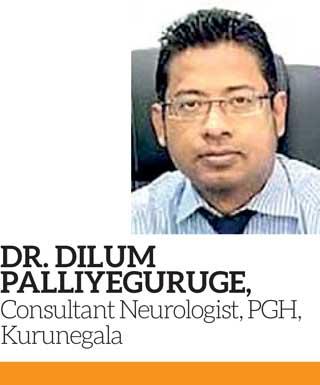Reply To:
Name - Reply Comment

 Most of you must have not really given a thought to the fact that we all take quite a fascinating drive along the path of life thanks to well-functional cognitive abilities like memory, reasoning and judgement. Imagine yourself loosing one of these capabilities-where would you end up?
Most of you must have not really given a thought to the fact that we all take quite a fascinating drive along the path of life thanks to well-functional cognitive abilities like memory, reasoning and judgement. Imagine yourself loosing one of these capabilities-where would you end up?
Dementia is the general term used to explain a decline in cognitive ability which is severe enough to interfere with one’s activities of daily living. Alzheimer’s Disease (AD) is the commonest type of dementia which affects atleast 50 million people worldwide and expects to reach 150 million by 2050, due to ageing population.
‘Know Dementia, Know Alzheimer’s’
September 2021 marks the 10th World Alzheimer’s month since the launch in 2012. This year’s theme is ‘Know Dementia, Know Alzheimer’s’ which focuses on the importance of spreading awareness on the disease to sail through it with minimal pressure.
“AD is defined as a gradual and progressive neurodegenerative disease occurring due to neuronal cell death resulting in progressive impairment of behavioural and cognitive functions. Affected patients will have a significant impact on carrying out their activities of daily living (AODL) there by getting a proper hit on their quality of life,” says Dr Dilum Palliyeguruge, Consultant Neurologist, PGH, Kurunegala.
Risk factors
Diagnosis
“An extensive history from the patient and care givers with a thorough physical examination help to diagnose AD and differentiate it from other types of dementia. We also pay attention to see how the quality of life and AODL have been affected in these patients” says Dr Palliyeguruge.
Although routine laboratory tests show no specific abnormalities, they can be used to rule out other similar presentations. CT brain, Cerebrospinal fluid (CSF) analysis, EEG, Volumetric MRI might also be useful in narrowing down the possible diagnoses. However, the most reliable method to detect mild cognitive impairment in early disease is neuropsychological testing. “Also, brain imaging techniques to detect core histological features of AD like amyloid plaques and neurofibrillary tangles can be useful”
Management
“Being a progressive neurodegenerative disorder marked by behaviour and cognitive impairment which eventually interferes with AODL, AD has no permanent cure. However, the rate of progression and symptoms can be addressed through a multidisciplinary approach” Dr Palliyeguruge explains.
Educating patient and family members about the disease and what to expect as time goes by
Adequate nursing care
A balanced diet to boost immunity
Physiotherapy and exercise to optimise the performance of AODL
Polypharmacy should be discouraged while ensuring that the patients do not develop significant adverse effects to prescribed drugs.
Care givers should be advised to keep notes on the worsening symptoms thus helping clinicians to evaluate patient’s progress to alter the management accordingly
Social workers to ensure an adequate support system
In addition, studies on a therapeutic agent (monoclonal antibody) called Donanemab are progressing as we talk now and this would be turning over a new page in slowing down the progression of AD even though the market availability of it might take quite a long time.
Prevention
-Bringing down the vascular risk by controlling blood pressure, blood sugar and lipid levels
-Ensure an adequate sleep where 6-7 hours uninterrupted sleep specially after 50 years of age, is advised. This sleep pattern will help to cleanse the brain and prevent the accumulation of toxic metabolites
-Avoiding substances like high amounts of alcohol which could be toxic to brain cells.
Forecast on the end of the tunnel
Although AD initially presents with impaired memory only, it can lead to severe cognitive and behavioural symptoms like depression, anxiety, anger, irritability and insomnia with time. “Number of years of survival after the diagnosis of AD is about 5-10 years, but the quality of life as the disease progresses would be poor unless an optimal support system and assistance in addition to medical therapy, are provided. Therefore, what needs to be done is to seek medical advice as soon as you notice changes discussed above to go for an early diagnosis, in order to start treatment and to keep the patient comfortable with an optimal quality of life” concludes Dr Palliyeguruge.